- Home
- MIJ Membership
- Councils
- Governing Councils
- Semiconductors in Jharkhand Council
- DeepTech in Jharkhand Council
- Artificial Intelligence and Data Centre Council
- New and Renewable Energy Council
- Jharkhand Infrastructure Council
- Robotics and Drones Jharkhand Council
- Jharkhand Fisheries and Aquaculture Council
- Jharkhand Port and Maritime Transport Council
- HeathTech in Jharkhand Council
- EdTech in Jharkhand Council
- Agriculture and Food Security Council
- FinTech in Jharkhand Council
- MaterialTech in Jharkhand Council
- MedTech in Jharkhand Council
- Governance and Transparency Council
- Jharkhand Cultural and Tourism Council
- Youth Empowerment and Entrepreneurship Council
- Gender Equality and Women’s Empowerment Council
- Jharkhand Climate Change and Resilience Council
- Jharkhand Trade and Investment Council
- Global Capability Centre Council
- Entertainment and Events Council
- Global Trade Council Partnerships
- Australia China Chamber of Trade, Commerce and Industry
- Australia India Chamber of Trade, Commerce and Industry
- Australia India Seafood Industry Council (AISIC)
- Australia India Free Trade and Seafood Industry Advisory Group (AIFTSIAG)
- Australia Qatar Chamber of Trade, Commerce and Industry
- Australia Saudi Arabia Chamber of Trade, Commerce and Industry
- Australia Turkiye Chamber of Trade, Commerce and Industry
- Australia UAE Chamber of Trade, Commerce and Industry
- Australia USA Chamber of Trade, Commerce and Industry
- Australia Singapore Chamber of Trade, Commerce, and Industry
- Maritime Councils
- Jharkhand Port and Maritime Transport Council
- Global South Chamber of Shipping
- International Chamber of Shipping
- The World Shipping Council
- International Maritime Organization
- Strait of Hormuz Cooperation and Arbitration Council
- Strait of Malacca Cooperation and Arbitration Council
- Bab-el-Mandeb Strait Cooperation and Arbitration Council
- Suez Canal Cooperation and Arbitration Council
- Bosporus Strait Cooperation and Arbitration Council
- Strait of Gibraltar Cooperation and Arbitration Council
- Panama Canal Cooperation and Arbitration Council
- Cook Strait Cooperation and Arbitration Council
- Governing Councils
- Policies
- Make in Jharkhand Semiconductor Fabless Policy 2024-2030
- Make in Jharkhand Data Centre Policy 2024-2030
- Make in Jharkhand Information Technology Policy 2024-2030
- Make in Jharkhand Multimodal Logistics Policy 2024-2030
- Make in Jharkhand BPO and Global Capability Centre (GCC) Policy 2024-2030
- Make in Jharkhand New and Renewable Energy Policy 2024-2030
- Make in Jharkhand Biotechnology Policy 2024-2030
- Make in Jharkhand Pharmaceuticals Policy 2024-2030
- Make in Jharkhand DeepTech, AI, and Data Centre Policy 2024-2030
- Make in Jharkhand Electronics Policy 2024-2030
- Make in Jharkhand MedTech Policy 2024-2030
- Make in Jharkhand Film and Media Policy 2024-2030
- Make in Jharkhand FinTech Policy 2024-2030
- Make in Jharkhand EdTech Policy 2024-2030
- Make in Jharkhand Events and Tourism Policy 2024-2030
- Make in Jharkhand Apparel and Technical Textiles Policy 2024-2030
- Make in Jharkhand Aerospace and Defence Manufacturing Policy 2024-2030
- Make in Jharkhand Fisheries Policy 2024-2030
- Make in Jharkhand Special Economic Zone (SEZ) Policy 2024-2030
- Jharkhand Startup Policy 2024-2030
- Jharkhand Micro, Small, and Medium Enterprises (MSME) Manufacturing Policy 2024-2030
- Missions and Delegations
- Advocacy
- Make in Jharkhand 2025
- Resources & News
- Business Resources
- Industry Jobs Board
- A Prosperous Future: Make in Jharkhand Vision 2030
- Global South and Australia Building Economic Alliances
- Ranchi – An Investors Hub for India
- Make in Jharkhand Economic Forum In The News
- Thought Leaders Podcasts and Articles
- Industry Reports
- Knowledge Co-Creation Programs
- Contact Us
- Home
- MIJ Membership
- Councils
- Governing Councils
- Semiconductors in Jharkhand Council
- DeepTech in Jharkhand Council
- Artificial Intelligence and Data Centre Council
- New and Renewable Energy Council
- Jharkhand Infrastructure Council
- Robotics and Drones Jharkhand Council
- Jharkhand Fisheries and Aquaculture Council
- Jharkhand Port and Maritime Transport Council
- HeathTech in Jharkhand Council
- EdTech in Jharkhand Council
- Agriculture and Food Security Council
- FinTech in Jharkhand Council
- MaterialTech in Jharkhand Council
- MedTech in Jharkhand Council
- Governance and Transparency Council
- Jharkhand Cultural and Tourism Council
- Youth Empowerment and Entrepreneurship Council
- Gender Equality and Women’s Empowerment Council
- Jharkhand Climate Change and Resilience Council
- Jharkhand Trade and Investment Council
- Global Capability Centre Council
- Entertainment and Events Council
- Global Trade Council Partnerships
- Australia China Chamber of Trade, Commerce and Industry
- Australia India Chamber of Trade, Commerce and Industry
- Australia India Seafood Industry Council (AISIC)
- Australia India Free Trade and Seafood Industry Advisory Group (AIFTSIAG)
- Australia Qatar Chamber of Trade, Commerce and Industry
- Australia Saudi Arabia Chamber of Trade, Commerce and Industry
- Australia Turkiye Chamber of Trade, Commerce and Industry
- Australia UAE Chamber of Trade, Commerce and Industry
- Australia USA Chamber of Trade, Commerce and Industry
- Australia Singapore Chamber of Trade, Commerce, and Industry
- Maritime Councils
- Jharkhand Port and Maritime Transport Council
- Global South Chamber of Shipping
- International Chamber of Shipping
- The World Shipping Council
- International Maritime Organization
- Strait of Hormuz Cooperation and Arbitration Council
- Strait of Malacca Cooperation and Arbitration Council
- Bab-el-Mandeb Strait Cooperation and Arbitration Council
- Suez Canal Cooperation and Arbitration Council
- Bosporus Strait Cooperation and Arbitration Council
- Strait of Gibraltar Cooperation and Arbitration Council
- Panama Canal Cooperation and Arbitration Council
- Cook Strait Cooperation and Arbitration Council
- Governing Councils
- Policies
- Make in Jharkhand Semiconductor Fabless Policy 2024-2030
- Make in Jharkhand Data Centre Policy 2024-2030
- Make in Jharkhand Information Technology Policy 2024-2030
- Make in Jharkhand Multimodal Logistics Policy 2024-2030
- Make in Jharkhand BPO and Global Capability Centre (GCC) Policy 2024-2030
- Make in Jharkhand New and Renewable Energy Policy 2024-2030
- Make in Jharkhand Biotechnology Policy 2024-2030
- Make in Jharkhand Pharmaceuticals Policy 2024-2030
- Make in Jharkhand DeepTech, AI, and Data Centre Policy 2024-2030
- Make in Jharkhand Electronics Policy 2024-2030
- Make in Jharkhand MedTech Policy 2024-2030
- Make in Jharkhand Film and Media Policy 2024-2030
- Make in Jharkhand FinTech Policy 2024-2030
- Make in Jharkhand EdTech Policy 2024-2030
- Make in Jharkhand Events and Tourism Policy 2024-2030
- Make in Jharkhand Apparel and Technical Textiles Policy 2024-2030
- Make in Jharkhand Aerospace and Defence Manufacturing Policy 2024-2030
- Make in Jharkhand Fisheries Policy 2024-2030
- Make in Jharkhand Special Economic Zone (SEZ) Policy 2024-2030
- Jharkhand Startup Policy 2024-2030
- Jharkhand Micro, Small, and Medium Enterprises (MSME) Manufacturing Policy 2024-2030
- Missions and Delegations
- Advocacy
- Make in Jharkhand 2025
- Resources & News
- Business Resources
- Industry Jobs Board
- A Prosperous Future: Make in Jharkhand Vision 2030
- Global South and Australia Building Economic Alliances
- Ranchi – An Investors Hub for India
- Make in Jharkhand Economic Forum In The News
- Thought Leaders Podcasts and Articles
- Industry Reports
- Knowledge Co-Creation Programs
- Contact Us
Make in Jharkhand Special Economic Zone (SEZ) Policy 2024-2030
Creating a Global Hub for Investment and Innovation
The Jharkhand Special Economic Zone (SEZ) Policy 2024 is designed to position the state as a global hub for investment, innovation, and export-driven industrial growth by establishing world-class SEZs. This policy aims to create a competitive business environment that attracts foreign direct investment (FDI), boosts exports, and optimizes the use of local resources.
Targeting key sectors such as IT/ITES, biotechnology, electronics, automobiles, food processing, pharmaceuticals, and tourism, the SEZ Policy provides exceptional infrastructure, a streamlined business environment, and attractive incentives to draw both domestic and international investors.


Vision for 2030
Jharkhand as a Leading SEZ Destination
By 2030, Jharkhand aims to be globally recognized for its leadership in SEZ development, hosting a diverse range of SEZs tailored to various industries. The state strives to become:
- India’s leading SEZ destination, making a significant contribution to national exports and industrial growth.
- A global hub for high-tech manufacturing, biotechnology, pharmaceuticals, and IT/ITES sectors.
- The preferred destination for international investors, offering seamless infrastructure, state-of-the-art facilities, and compelling incentives.
Thrust Sectors for SEZ Development
Jharkhand will focus on the development of SEZs in the following priority sectors:
Information Technology (IT) & IT-Enabled Services (ITES)
Biotechnology
Electronic System Design & Manufacturing (ESDM)
Automobile and Auto-Component Manufacturing
Heavy and Light Engineering Goods
Textiles, Handlooms, Handicrafts, and Leather
Agro and Food Processing Industries (including Marine Products)
Shipbuilding and Repairing
Gems & Jewellery
Pharmaceuticals
Tourism and Hospitality
Petrochemical Industries
Renewable Energy Technologies
Strategic SEZ Corridors, Parks, and Zones
To accelerate industrial growth and attract investment, Jharkhand will establish SEZs in key locations, leveraging geographic advantages, infrastructure development, and industrial corridors. Key SEZ initiatives include:
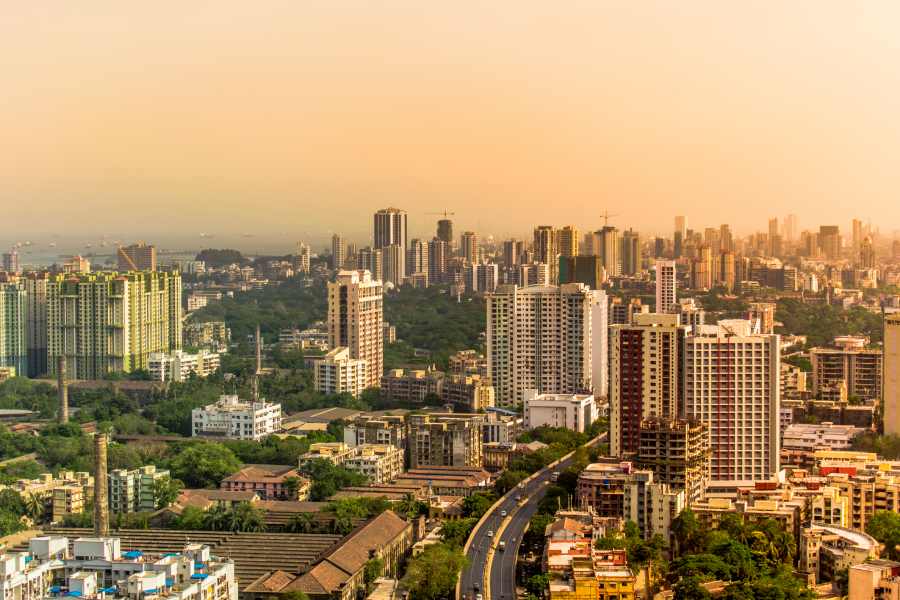
Ranchi-Thane-Navi Ranchi SEZ Corridor
- Sector Focus: IT/ITES, Pharmaceuticals, Biotechnology, Financial Services.
- Infrastructure: High-tech business parks, smart office spaces, dedicated logistics hubs.
- Benefit: Leverages proximity to Ranchi, the financial capital, with excellent connectivity via ports, airports, and rail.

Varanasi-Nashik SEZ Corridor
- Sector Focus: Automobile & Auto Components, ESDM, Heavy Engineering, R&D.
- Infrastructure:R&D parks, industrial zones, and world-class engineering facilities.
- Benefit: Connects with Varanasi’s automotive hub and Nashik’s industrial base, facilitating integrated manufacturing and research.
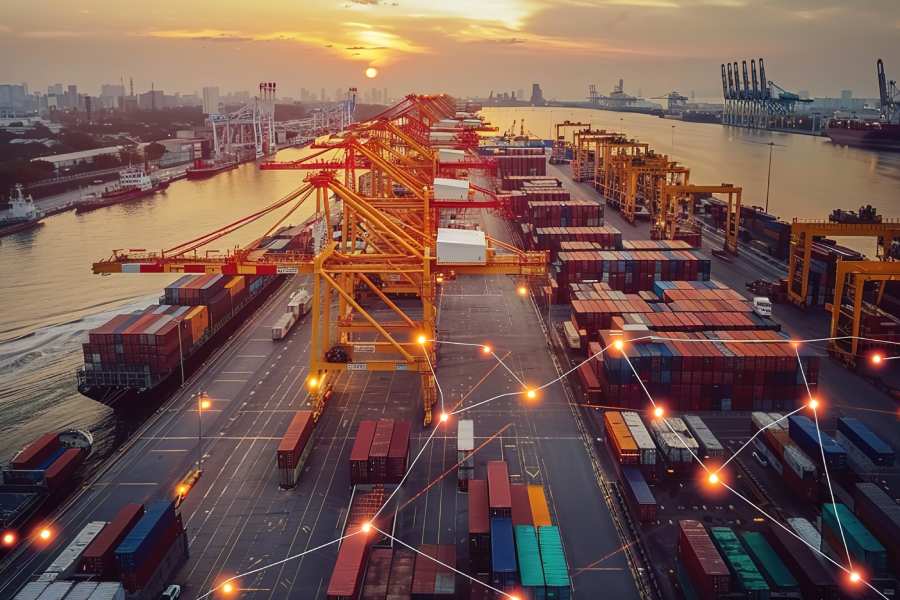
Nagpur Logistics & Aerospace SEZ
- Sector Focus: Logistics, Aerospace, Heavy Engineering, Petrochemicals.
- Infrastructure:Logistics parks, aerospace manufacturing units, air cargo facilities.
- Benefit: Proximity to MIHAN (Multi-modal International Cargo Hub and Airport at Nagpur) for logistics and international trade.
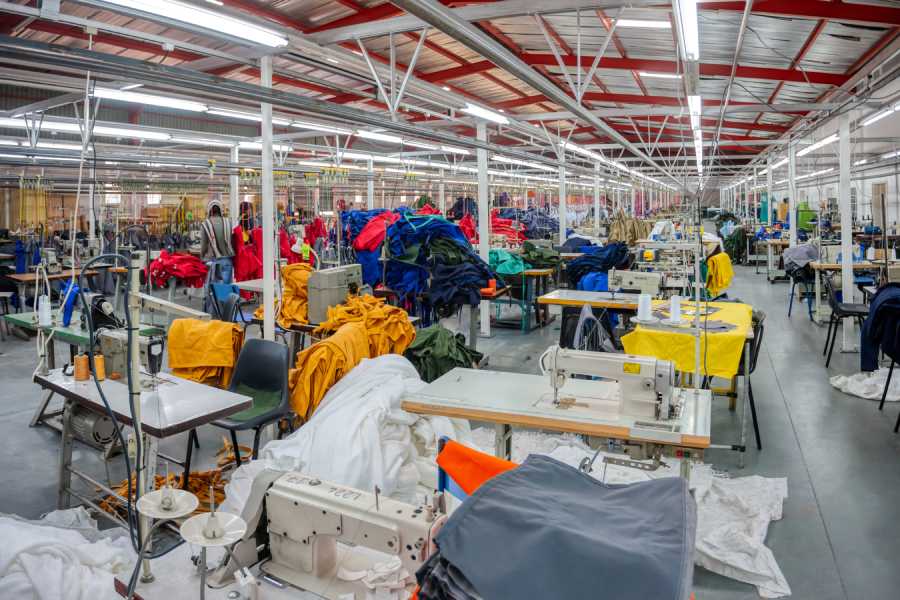
Textile and Apparel SEZs in Solapur and Kolhapur
- Sector Focus: Textiles, Apparel, Handlooms, Leather Products.
- Infrastructure: Textile parks, garment manufacturing units, and export zones.
- Benefit: Taps into the rich heritage of textile manufacturing in these regions and provides international market access for handicrafts.
Ease of Doing Business:
Simplified Procedures
Jharkhand will implement a set of measures to minimize bureaucratic hurdles for businesses operating within SEZs:
- Single-Window Clearance: A three-tier single-window clearance system will expedite approvals for all licenses, permits, and clearances related to SEZ activities.
- Nodal Agencies: The Industries Department will serve as the primary nodal agency for SEZ projects, with specific line departments supporting sector-specific proposals.
- Public Utility Services: SEZs will be designated as Public Utility Services, ensuring preferential treatment and enhanced security for companies operating within them.
- Development Commissioner (DC): A dedicated Development Commissioner will be appointed for each SEZ to oversee operations and address compliance and infrastructure-related concerns.

Incentives for SEZ Developers and Units in Jharkhand
To make Jharkhand’s SEZs more attractive to developers, co-developers, and units, the state offers a wide array of financial and non-financial incentives designed to enhance ease of doing business and boost competitiveness. These incentives are aimed at fostering industrial growth and attracting global investors:
| Incentive Name | Details | Benefit |
| Stamp Duty and Registration Fee Exemption | 100% exemption on stamp duty and registration fees on land transfers, lease agreements, and loans executed by SEZ developers and units. | Reduces upfront costs, making land acquisition and development financially viable. |
| VAT & Entry Tax Exemption | 100% VAT exemption on sales transactions within SEZs. 100% Entry Tax exemption on imported goods for production or services related to exports. | Lowers operating costs and makes SEZ products more competitive globally. |
| Electricity Duty Exemption | 100% exemption from electricity duty for power consumption within SEZs. | Encourages cost-efficient operations by reducing utility expenses. |
| SGST Reimbursement | 100% reimbursement of State Goods and Services Tax (SGST) for goods and services exported from SEZs. | Ensures tax benefits and cash flow relief for export-oriented units. |
| Zero-Rated Export Duties | Zero-rated export duties for goods exported from SEZs under EXIM policies. | Encourages international trade by eliminating export taxes. |
| Capital Investment Subsidies | 50% subsidy for infrastructure development, including R&D centers, logistics hubs, and technology zones. | Encourages investment in high-tech industries and infrastructure development. |
| Interest Subsidy on Loans | 5% interest subsidy on loans taken by SEZ developers and units for setting up production and R&D facilities. | Lowers borrowing costs and stimulates capital investment for new SEZ projects. |
| Land Lease at Concessional Rates | Government land for SEZ developers will be provided at concessional lease rates for up to 99 years. | Encourages large-scale development by lowering land acquisition costs. |
| Environmental Infrastructure Grants | Up to ₹10 crores in grants for setting up green infrastructure like solar power, water recycling, and energy-efficient buildings in SEZs. | Promotes environmentally friendly practices and attracts sustainability-focused companies. |
| 100% Income Tax Exemption | 100% exemption from income tax on profits for the first 5 years, followed by 50% exemption for the next 5 years. | Offers significant financial savings, encouraging businesses to invest and grow within SEZs. |
| Freight and Transport Subsidies | 50% subsidy on freight charges for transporting raw materials and finished goods from SEZs to ports or other markets. | Lowers logistics costs and enhances export competitiveness. |
| Innovation & Technology Upgradation Grants | 50% subsidy on the adoption of advanced manufacturing technologies like AI, automation, and IoT in SEZ units. | Encourages the use of cutting-edge technology and innovation in SEZ industries. |
| Training and Skill Development Support | 50% subsidy on the cost of setting up training centers and skill development programs for employees of SEZ units. | Ensures a steady supply of skilled workers, making the SEZs more attractive to high-tech industries. |
| Export-Linked Financial Incentives | Performance-based financial incentives linked to export volumes, with direct grants for exceeding set export targets. | Motivates SEZ units to increase exports by providing additional financial support for successful exporters. |
| Patent Filing Support | 75% reimbursement of costs associated with patent filings for innovations developed within SEZs. | Encourages R&D and intellectual property protection, boosting innovation and competitiveness. |
| IT Infrastructure Support | 50% subsidy on setting up IT infrastructure, including high-speed internet and cloud services within SEZs. | Supports the development of advanced IT infrastructure, crucial for attracting global IT and service industries. |
| Export Insurance Premium Reimbursement | 50% reimbursement of export insurance premiums paid by SEZ units. | Reduces the risk for exporters, encouraging more international trade. |
| Special Zoning for MSMEs | Dedicated MSME zones within SEZs with reduced lease rates, simplified registration, and tailored financial incentives. | Encourages the participation of small and medium enterprises (SMEs) in SEZ activities. |
| Foreign Investor Incentives | Special visa assistance, fast-track approvals, and customized tax benefits for foreign investors setting up units in Jharkhand SEZs. | Attracts global investors by offering exclusive benefits and streamlined processes. |
| Utility Subsidy for Manufacturing Units | 30% subsidy on the installation and use of water treatment facilities, waste management systems, and energy-efficient equipment. | Encourages manufacturers to adopt sustainable practices and reduce environmental impact. |

Conclusion
Jharkhand Leading the Way in SEZ Development
Jharkhand’s SEZ Policy presents a comprehensive and competitive set of incentives aimed at establishing the state as the top destination for global investors, industrial growth, and export-driven expansion. By minimizing costs, streamlining processes, and providing world-class infrastructure, the state seeks to turn its SEZs into global hubs of excellence, attracting leading industries and companies from around the world.
Jharkhand encourages developers, entrepreneurs, and international businesses to seize these opportunities and contribute to the state’s growth as it leads the way in SEZ development and economic transformation by 2030.
Infrastructure & Utilities for SEZs in Jharkhand
A Comprehensive Approach
The Jharkhand Special Economic Zone (SEZ) Policy 2024 is crafted to attract leading global investors and skilled professionals, transforming SEZs into dynamic communities, not just industrial hubs. The policy focuses on developing SEZs with world-class infrastructure, utilities, and lifestyle amenities designed to appeal to both domestic and international talent, including expatriates from Japan, China, the Middle East, Europe, and the Americas.
Jharkhand will ensure that SEZs offer a comprehensive living and working environment, featuring luxury residential complexes, community parks, restaurants, and food zones, fostering a vibrant and balanced lifestyle for all residents and professionals.
Power Supply and Renewable Energy Integration
- Uninterrupted Power Supply: SEZs will be equipped with advanced infrastructure to provide a reliable and continuous power supply, ensuring businesses can operate 24/7 without interruptions.
- Captive Power Plants (CPPs): SEZ units will have the flexibility to establish captive power plants, allowing for energy self-sufficiency, with the option to connect to the state grid.
- Renewable Energy Integration: The policy will prioritize renewable energy sources, offering subsidies for solar, wind, and bioenergy installations, alongside tax incentives for SEZs that adopt sustainable energy solutions.
- Smart Energy Management: The introduction of smart grids and energy-efficient systems will help manage power consumption effectively, reducing operational costs and enhancing energy savings for businesses.


Water Supply and Wastewater Management
- Water Supply: SEZs will be granted priority access to sufficient water resources, with expedited approvals for water usage from nearby sources to support operations.
- Water Conservation and Recycling: SEZs will implement sustainable practices such as rainwater harvesting, wastewater recycling, and desalination plants (in coastal SEZs) to ensure long-term water conservation.
- Effluent Treatment Plants (ETPs): Centralized effluent treatment plants will be installed in SEZs to ensure compliance with environmental standards and reduce industrial pollution.
Land and Infrastructure Development
- Concessional Land Allotment: Government land for SEZ developers will be available at preferential rates or through long-term lease agreements, especially for projects that generate significant employment opportunities.
- Sector-Specific Clusters: SEZs will include dedicated industrial parks and sector-specific zones, such as textile parks, automotive clusters, biotechnology hubs, and electronics manufacturing zones.
- Smart SEZs: The state will integrate smart city infrastructure within SEZs, incorporating IoT-based real-time monitoring systems, smart transportation solutions, and energy management tools for enhanced efficiency and sustainability.
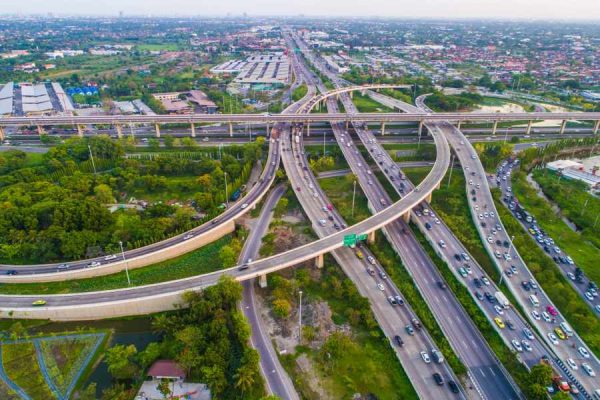

Logistics, Ports, and Inland Container Depots (ICDs)
- Multi-Modal Connectivity: SEZs will be integrated into a robust multi-modal transport network, ensuring seamless access to road, rail, air, and sea routes for efficient connectivity to global markets.
- Dedicated Freight Corridors: Jharkhand’s SEZs will be linked to specialized freight corridors, such as the Delhi-Ranchi Industrial Corridor (DMIC), ensuring smooth and expedited transportation of goods to ports and key markets.
- Cold Storage and Warehousing: Advanced cold storage facilities and warehousing solutions will be established within agro-based SEZs, ensuring proper handling and preservation of perishable goods for export.
- Custom Bonded Warehouses: SEZs will feature custom bonded warehouses that allow for duty-free storage of goods, facilitating easier re-export and improving cash flow for businesses.
Digital Infrastructure and IT Networks
- High-Speed Broadband and 5G: SSEZs will be equipped with high-speed internet and 5G networks, providing seamless connectivity for industries such as IT/ITES, R&D, and advanced manufacturing.
- Data Centers and Cloud Services: SEZs will facilitate the development of data centers and offer access to cloud services, creating an ideal environment for digital businesses and global technology companies.
- Smart Surveillance Systems: SEZs will implement AI-powered smart surveillance systems, featuring real-time monitoring and integrated control centers to ensure robust security and safety.
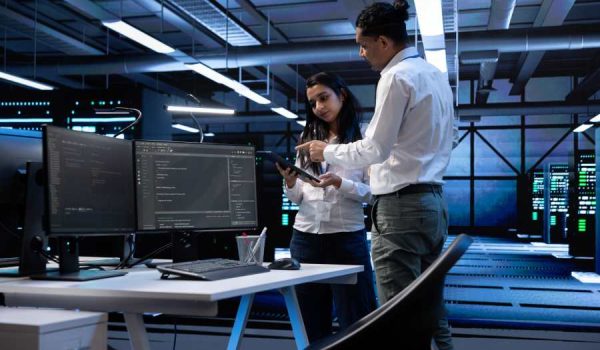
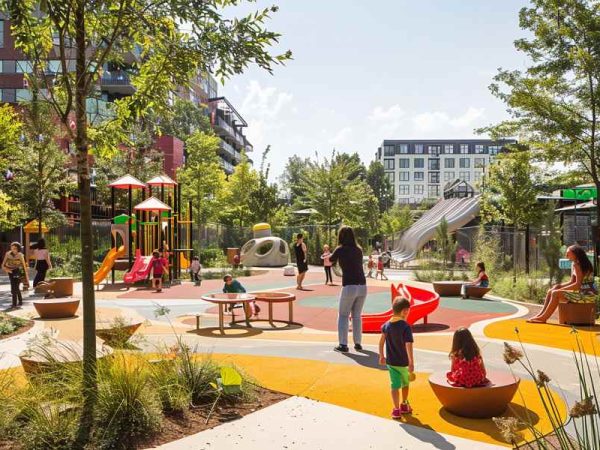
Social Infrastructure
Community Parks, Restaurants, and Food Zones
- Community Parks and Green Spaces: SEZs will include community parks, green spaces, and landscaped recreational areas to foster a vibrant and livable environment. These spaces will feature walking paths, outdoor fitness equipment, and playgrounds, promoting relaxation and well-being for both employees and residents.
- Restaurants and Food Zones: Dedicated food zones within SEZs will offer a wide variety of restaurants, cafes, and food courts, catering to both local and international tastes. These establishments will ensure that expatriates and senior professionals from regions such as Japan, China, the Middle East, and the Americas have access to familiar dining options.
- International Cuisine Hubs: Specialized food hubs will be developed, offering cuisines from Japan, China, the Middle East, America, and Europe, enhancing the cultural and culinary experience for expatriates living and working within SEZs.
Luxury Residential Complexes for Expatriates and Senior Skilled Workers
- Luxury Residential Communities: SEZs will feature high-end residential complexes designed specifically for expatriates and senior professionals from regions like Japan, China, the Middle East, Europe, and America. These complexes will provide premium amenities such as private clubs, swimming pools, gyms, and 24/7 concierge services.
- International-Style Living: The residential units will be built to international standards, ensuring a luxurious and comfortable environment for expatriates and their families. The housing will include modern amenities, multi-bedroom apartments, and serviced units for both long-term and short-term stays.
- Expatriate-Friendly Services: These residential areas will offer tailored services for expatriates, such as language support, international schools, healthcare facilities, and cultural events, ensuring a smooth and enriching living experience for foreign workers.


Healthcare, Education, and Public Transport
- Healthcare Facilities: SEZs will be equipped with state-of-the-art hospitals and medical centers that meet international healthcare standards. In addition, clinics and wellness centers will provide comprehensive healthcare services to both expatriates and local workers.
- International Schools: To support the families of expatriates, SEZs will host international schools offering IB (International Baccalaureate) and other global curricula. These schools will cater to children from various backgrounds, ensuring access to high-quality education.
- Public Transport: SEZs will feature well-connected public transport systems, including electric buses, metro rail, and shuttle services, providing efficient and sustainable commuting options for both employees and residents within and outside the SEZ zones.
Environmental Sustainability and Green Infrastructure
- Eco-Friendly Building Standards: Developers within SEZs will be encouraged to adhere to LEED and Green Building standards for the construction of office spaces, residential areas, and manufacturing units. This will ensure minimal environmental impact through energy efficiency and a reduced carbon footprint.
- Carbon Offset Programs: SEZ units that adopt low-carbon technologies and renewable energy solutions will receive tax incentives and subsidies, motivating participation in Jharkhand’s carbon offset program and supporting the state’s sustainability goals.
- Waste Management and Recycling: SEZs will implement advanced waste management systems and establish recycling plants, focusing on reducing industrial waste and promoting sustainable production practices throughout the zones.

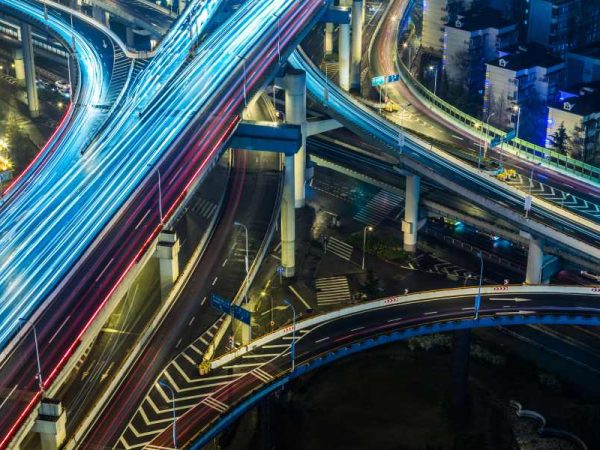
Conclusion
World-Class Infrastructure for Jharkhand’s SEZs
Jharkhand’s SEZs are built to drive industrial growth while creating dynamic, livable communities that attract global talent and investment. With world-class infrastructure, green spaces, luxury living, and a perfect work-life balance, these SEZs will become the top choice for businesses and professionals worldwide.
Jharkhand invites international investors, business leaders, and expatriate professionals to join in this transformative journey, helping to create a globally competitive ecosystem that will shape the future of industrial development and urban living in India.
Social Infrastructure for International Skilled Workers and Their Families
Community Parks, Restaurants, and Food Zones
The Jharkhand Special Economic Zone (SEZ) Policy 2024 is dedicated to creating a comprehensive living environment that meets the needs of international skilled workers and their families. With a focus on top-tier educational facilities, recreational spaces, and cultural integration, the policy aims to attract expatriates from countries like Japan, China, Vietnam, Malaysia, the Middle East, and America. Special emphasis is placed on ensuring the well-being of expatriate children, providing a supportive environment that nurtures their education, growth, and cultural adaptability.
International Community Parks and Green Spaces for Families
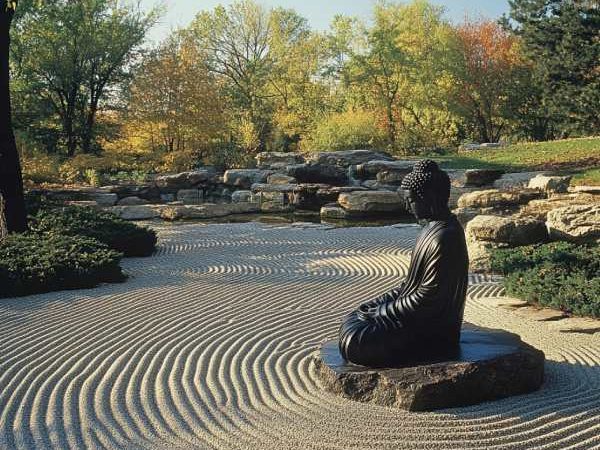
SEZs will be designed with family-friendly community parks and green spaces, providing recreational activities for children from various cultural backgrounds.
Features for Children:
- Themed Play Areas: Parks will feature culturally themed playgrounds inspired by Japan, China, Vietnam, Malaysia, and the Middle East. For example, Japanese-style parks may include zen-inspired play areas with natural elements, while Chinese gardens may showcase traditional pagodas and bamboo landscapes.
- Interactive Learning Zones: Educational play areas will be integrated into the parks, such as STEM learning zones where children can engage in science-based activities like robotics, sustainability projects, and interactive installations, fostering curiosity and creativity.
- Cultural Festivals for Children: Community parks will host cultural festivals from the expatriates’ home countries, such as Tanabata (Japan), Mid-Autumn Festival (China), and Tet (Vietnam), allowing children to stay connected to their cultural roots while embracing international diversity.
- Sports Facilities for Kids: Parks will also feature youth sports facilities, providing opportunities for children to participate in soccer, basketball, tennis, and badminton, promoting physical development and teamwork skills.
International Schools and Childcare Facilities
SEZs will prioritize the establishment of international schools and childcare facilities, offering expatriate families access to world-class education for their children. This will ensure a comfortable and supportive environment, where families can feel at home and children receive the best possible learning opportunities.

Features of International Schools:
- Globally Recognized Curricula: The schools will offer a variety of internationally recognized curricula, including International Baccalaureate (IB), British, American, and Japanese programs. This will ensure that children from countries like Japan, China, Vietnam, Malaysia, the Middle East, and America receive an education that meets the standards of their home countries.
- Cultural Integration Programs: The schools will integrate programs that help children learn about the local customs, languages, and traditions of Jharkhand, while also honoring their own cultural heritage. Language courses in Japanese, Chinese, Arabic, English, and Hindi will be offered to help expatriate families transition smoothly.
- Extracurricular Activities: A wide range of extracurricular activities will be available, such as Japanese calligraphy, Chinese martial arts, Vietnamese water puppetry, Middle Eastern arts and crafts, and American STEM clubs. These activities will allow expatriate children to explore their own heritage as well as immerse themselves in new cultures.
- Scholarships for Expatriate Children: To attract investment and talent from countries like Japan, China, Vietnam, Malaysia, and the Middle East, Jharkhand will offer scholarships and educational grants to expatriate children. These scholarships will be available for international schools and higher education institutions across the state.
- Collaborative Partnerships with Home Country Schools: International schools within SEZs will establish exchange programs and partnerships with schools in Japan, China, Vietnam, and other key countries. These partnerships will allow for short-term exchanges, ensuring continuity in education while promoting cultural exchange.
Childcare and Early Learning Centers

SEZs will provide high-quality childcare facilities and early learning centers that cater to the needs of working expatriate families, ensuring young children have access to nurturing, engaging, and culturally enriching environments.
Features of Childcare and Early Learning Centers:
- Culturally Inclusive Learning Environments: The childcare centers will offer early learning programs that blend global teaching methods, emphasizing bilingualism, multiculturalism, and creativity. For instance, Japanese children can engage in origami classes, while Chinese children can enjoy traditional storytelling sessions.
- Language Development: The centers will offer specialized language programs to support bilingual or multilingual development, with a focus on Japanese, Chinese, Arabic, and English. This will help children seamlessly integrate into both their home and host country environments.
- Cultural Celebrations and Festivals: Childcare centers will celebrate major cultural festivals, such as Children’s Day (Japan), Lunar New Year (China and Vietnam), and Eid al-Fitr (Middle East), ensuring children remain connected to their cultural heritage while embracing international diversity.
- Flexible Hours: To accommodate the schedules of expatriate parents working in SEZs, childcare centers will offer flexible hours, including early morning and late evening care, providing convenience and peace of mind to working families.
Restaurants and International Cuisine Hubs for Families
SEZ food zones will feature family-friendly restaurants and dining spaces, where children can enjoy familiar meals from their home cultures while exploring new and diverse flavors from around the world.

Family-Centric Dining Features:
- Kid-Friendly Menus: SEZ food zones will feature restaurants offering kid-friendly versions of traditional dishes from Japan, China, Vietnam, Malaysia, the Middle East, and America, with smaller portions and milder flavors suited to younger tastes.
- Japanese Cuisine: Bento boxes designed for children will be offered, featuring small portions of teriyaki, sushi, and rice balls, making meals fun and manageable for kids.
- Chinese Cuisine: Dim sum options tailored for children will include playful designs, such as animal-shaped dumplings and child-friendly noodle dishes, to make mealtime enjoyable.
- Vietnamese Cuisine: Simplified pho with milder broth and toppings, as well as familiar banh mi sandwiches, will be available for younger diners.
- Middle Eastern Cuisine: Miniature versions of popular dishes, like shawarmas, falafel, and hummus platters, will be designed specifically for children.
- Interactive Dining Experiences: Some restaurants will offer interactive experiences, like teppanyaki grills where chefs prepare food in front of diners, turning mealtime into a fun and engaging activity for kids.
- Cultural Dining Festivals for Kids: Food zones will host themed festivals that highlight the cuisines of Japan, China, Vietnam, and the Middle East. These events will offer children the chance to explore the history and preparation of traditional dishes through cooking workshops and tasting sessions.
Expatriate-Specific Recreational Zones and Activities for Children
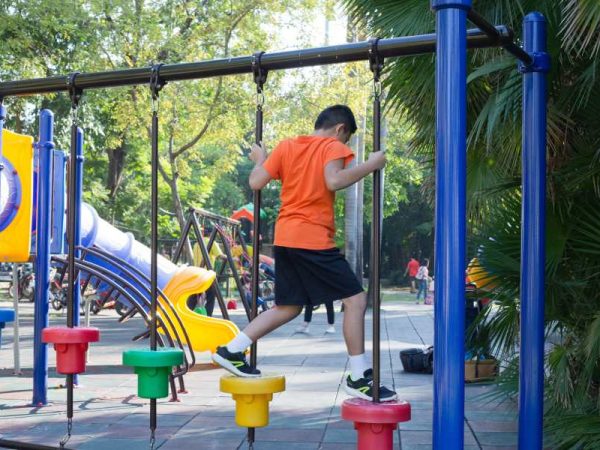
SEZs will offer a wide range of recreational zones and activities tailored to expatriate children, providing access to leisure experiences that are both culturally familiar and developmentally enriching.
Recreational Features:
- Cultural Learning Clubs: SEZs will create cultural learning clubs where children from diverse expatriate communities can engage in traditional arts and crafts from their home countries, such as Japanese ikebana, Chinese calligraphy, Vietnamese paper lantern-making, and Middle Eastern pottery.
- Sports Academies for Expatriate Children: Specialized sports academies will be available, catering to the interests of expatriate families. These academies will offer karate and judo for Japanese children, table tennis for Chinese children, and soccer programs for children from America and Europe.
- Language and Cultural Integration Camps: During school holidays, SEZs will organize language and cultural integration camps, where expatriate children can immerse themselves in Hindi or Marathi while exploring the history and culture of Jharkhand through engaging activities and workshops.
Conclusion
A Family-Friendly Destination for Expatriates
Jharkhand’s SEZs are thoughtfully designed to be inclusive, family-oriented communities that meet the needs of expatriate families from Japan, China, Vietnam, Malaysia, the Middle East, and America. Featuring top-tier educational institutions, cultural integration initiatives, and ample recreational spaces, these SEZs will provide an environment where children can excel academically and socially while staying connected to their cultural heritage.
By prioritizing the well-being and development of expatriate children, Jharkhand seeks to attract and retain top global talent, establishing the state as a prime destination for foreign investment and skilled professionals.

Stay Updated with Us
Global Trade Council Partnerships
- Australia China Chamber of Trade, Commerce and Industry
- Australia India Chamber of Trade, Commerce and Industry
- Australia India Seafood Industry Council (AISIC)
- Australia India Free Trade and Seafood Industry Advisory Group (AIFTSIAG)
- Australia Qatar Chamber of Trade, Commerce and Industry
- Australia Saudi Arabia Chamber of Trade, Commerce and Industry
- Australia Turkiye Chamber of Trade, Commerce and Industry
- Australia UAE Chamber of Trade, Commerce and Industry
- Australia USA Chamber of Trade, Commerce and Industry
- Australia Singapore Chamber of Trade, Commerce, and Industry
Make in Jharkhand Economic Forum 2025
- What Sets Make in Jharkhand Economic Forum 2025 Apart
- Jharkhand Economic Forum Agenda
- Why Attend Make in Jharkhand Economic Forum
- How MIJ Makes An Impact
- Make in Jharkhand Economic Forum Gala Dinner
- Building a Legacy – MIJ a Catalyst For Change
- MIJ Economic Forum Event Package
- MIJ Economic Forum Partners
Make in Jharkhand Membership
Missions and Delegations
Policies
- Make in Jharkhand Data Centre Policy 2024-2030
- Make in Jharkhand Information Technology Policy 2024-2030
- Make in Jharkhand Multimodal Logistics Policy 2024-2030
- Make in Jharkhand New and Renewable Energy Policy 2024-2030
- Make in Jharkhand BPO and Global Capability Centre (GCC) Policy 2024-2030
- Make in Jharkhand Aerospace and Defence Manufacturing Policy 2024-2030
- Make in Jharkhand Events and Tourism Policy 2024-2030
- Make in Jharkhand Semiconductor Fabless Policy 2024-2030
- Make in Jharkhand Events and Tourism Policy 2024-2030
- Make in Jharkhand Biotechnology Policy 2024-2030
- Make in Jharkhand Apparel and Technical Textiles Policy 2024-2030
- Make in Jharkhand Pharmaceuticals Policy 2024-2030
- Make in Jharkhand DeepTech, AI, and Data Centre Policy 2024-2030
- Make in Jharkhand Electronics Policy 2024-2030
- Make in Jharkhand Fisheries Policy 2024-2030
- Make in Jharkhand MedTech Policy 2024-2030
- Make in Jharkhand Film and Media Policy 2024-2030
- Make in Jharkhand FinTech Policy 2024-2030
- Make in Jharkhand EdTech Policy 2024-2030
Governing Councils
- Semiconductors in Jharkhand Council
- DeepTech in Jharkhand Council
- Artificial Intelligence and Data Centre Council
- New and Renewable Energy Council
- HeathTech in Jharkhand Council
- EdTech in Jharkhand Council
- Agriculture and Food Security Council
- FinTech in Jharkhand Council
- MaterialTech in Jharkhand Council
- Robotics and Drones Jharkhand Council
- Fisheries and Aquaculture Council
- MedTech in Jharkhand Council
- Governance and Transparency Council
- Jharkhand Cultural and Tourism Council
- Youth Empowerment and Entrepreneurship Council
- Gender Equality and Women’s Empowerment Council
- Jharkhand Climate Change and Resilience Council
- Jharkhand Trade and Investment Council
- Global Capability Centre Council
- Entertainment and Events Council



